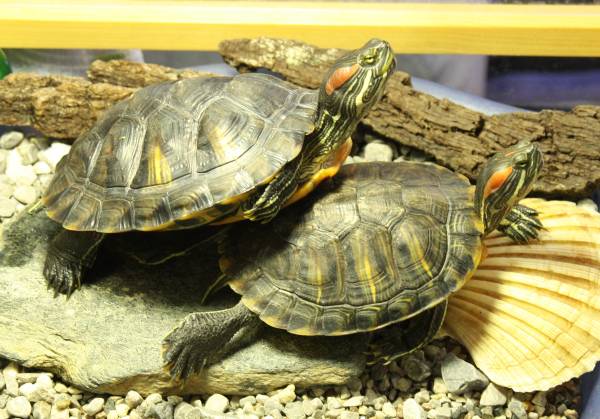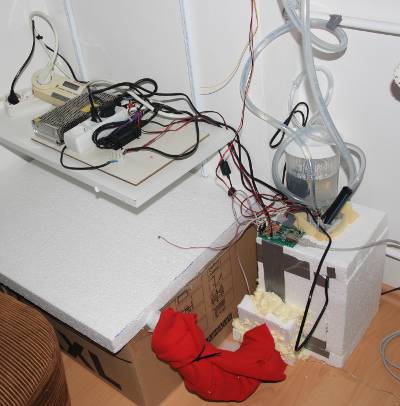Executive summary
We have two turtles who need to hibernate every winter. Last year it was very difficult (I over-engineered) but this year it’s looking better, and there’s cool graphs to monitor their health!
Our turtles and their home
We have two red snapper turtles, Arthur and Turok:
During the summer, they enjoy the huge (700l) aquarium in our living room
…but in the winter they should go into hibernation… They would survive without a yearly hibernation cycle, but it’s better for their health to go into hibernation.
Hibernation System 1.0
Last year I built a custom refrigerator:
This was a great learning experience (microcontroller programming, peltier elements, heat exchange, insulation, pumps, warm/cold water cycles…), but unfortunately not so effective… I was plagued with teething problems such as defective peltier elements, slime in the heat exchanger, ice crystalising in the warm water cycle… which resulted in a few unhealthy warm spikes in the otherwise stable “winter”…
Optimal hibernation
On recommendation from the local reptile institute we do the following hibernation sequence:
- Over a 4 week period reduce the hours of sunlight (150W full spectrum lamp over their island) and water temperature from the regular “summer” (10 hours/day at 25°C) to “winter” (3 hours/day at room temperature 20°C) over 6 weeks. The regular aquarium lighting is also reduced from 12 hours/day to 6 hours/day (we can’t afford to let the plants and fish go so dark…).
- Stop feeding 5 days before transfer to reduced activity phase.
- For the reduced activity phase before complete hibernation transfer from the large tank (we can’t cool such a huge mass of water in our living room any lower than room temperature) and place into a smaller tank at ~15C in the cellar with only one hour of light per day.
- Stay in reduced activity for about a week.
- Transfer into individual small tanks (just big enough so they can turn around) with water temperature at 12°C and water level just over the shell (so the turtle can easily lift head to breath if necessary, but is completely submerged otherwise) and place in the temperature controlled refrigerator.
- Reduce the temperature in the refrigerator by 1°C every 2 days until tank temperature is at about 6°C.
- Every 2-4 weeks during the ~4 months of hibernation:
- Change the water (should be done every week the first 3 weeks because they may still dirty the water with excrement, but it is ok if they don’t empty their bowels for hibernation!)
- Weigh the turtle (a total weight loss of up to 10% during hibernation is acceptable, any more and an early spring should be induced)
- Check for any signs of sickness
- About 3-4 months do the same again in reverse…
Hibernation Control System 2.0
The software making the data visible
Using the powers of Dancer, Plack, Starman, and jqPlot, I put a small web app together to display the data. Here’s a post about implementing the web application.


